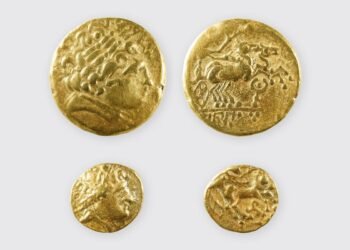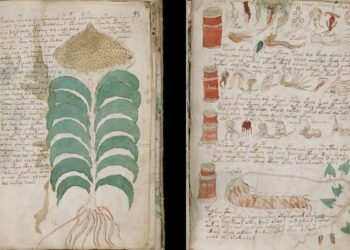Archaeologists in China have uncovered a 5,000-year-old tomb believed to belong to a prehistoric king in the Wangzhuang ruins, located in central China’s Henan Province. This extraordinary discovery features more than 350 burial artifacts. The site, believed to be the capital of a prehistoric kingdom, has generated significant interest due to the tomb’s size, the wealth of artifacts, and evidence of cultural exchanges between various ancient societies.
The tomb, designated M27, is located in the Wangzhuang ruins in Yongcheng city and dates back to the middle and late periods of the Dawenkou Culture (4000 BCE-2600 BCE), a Neolithic culture in ancient China. It measures between 4.52 to 4.8 meters in length and 3.47 to 3.68 meters in width, making it one of the largest tombs discovered from this period. The burial site includes both inner and outer coffins and covers an impressive 17 square meters, a substantial size for the era.
According to Zhu Guanghua, associate professor at Capital Normal University and one of the lead archaeologists involved in the excavation, “The latest discovery indicates that the Wangzhuang ruins are not an ordinary settlement, but rather the capital of a prehistoric kingdom.” The tomb was filled with over 100 pieces of pottery, nearly 200 jade ornaments, bone tools, and animal remains, including pig mandibles, symbolizing wealth in that era.
Archaeologists were particularly excited by the evidence of cultural fusion uncovered at the site. Li Xinwei, deputy director of the Institute of Ancient History at the Chinese Academy of Social Sciences, said: “Its discoveries testify to the initial exchanges of early Chinese civilization, providing evidence for the nature of diversity within Chinese civilization. This site offers important examples for studying cultural fusion across different prehistoric regions.” Artifacts found at the site suggest influences from both the eastern and central regions of ancient China, as well as from the Yangtze River basin, indicating that the Wangzhuang inhabitants engaged in a wide array of cultural exchanges.
One of the most intriguing aspects of the tomb is the evidence of intentional destruction, possibly by rival forces, shortly after its construction. Zhu noted that many of the tomb’s significant artifacts were looted, and the skeletal remains of the tomb owner had been severely disturbed, with only a few toe bones remaining. Several jade ornaments were scattered in and around the coffin, and many ceremonial stone blades were found deliberately broken. Researchers are continuing to investigate the reason for the destruction of the tomb and its artifacts.
The M27 tomb, the largest found at the site, is not the only significant discovery. In 2024 alone, archaeologists unearthed 45 new tombs from the Dawenkou Culture, of which 27 have been fully excavated. Liu Haiwang, leader of the joint archaeological team, explained that these tombs yielded an array of valuable artifacts. “The richness of the burial objects is closely linked to the size of the tombs, indicating that a clear social hierarchy and class stratification had already emerged,” Liu stated. He also noted that some tombs contained pig mandibles, suggesting that they belonged to higher-ranking individuals.
The Dawenkou Culture, known for its advancements in pottery production, played a crucial role in shaping the ritual culture of later Chinese dynasties, including the Xia, Shang, and Zhou. The pottery, stone tools, and jade artifacts found at Wangzhuang illustrate the skilled craftsmanship and division of labor in this ancient society.
Previously, it was thought that Chinese civilization primarily emerged from the Yellow River valley. However, as recent findings from sites like Wangzhuang demonstrate, many autonomous cultures across different regions interacted and influenced one another, creating a more complex picture of ancient China’s development.
More information: Xinhua






















